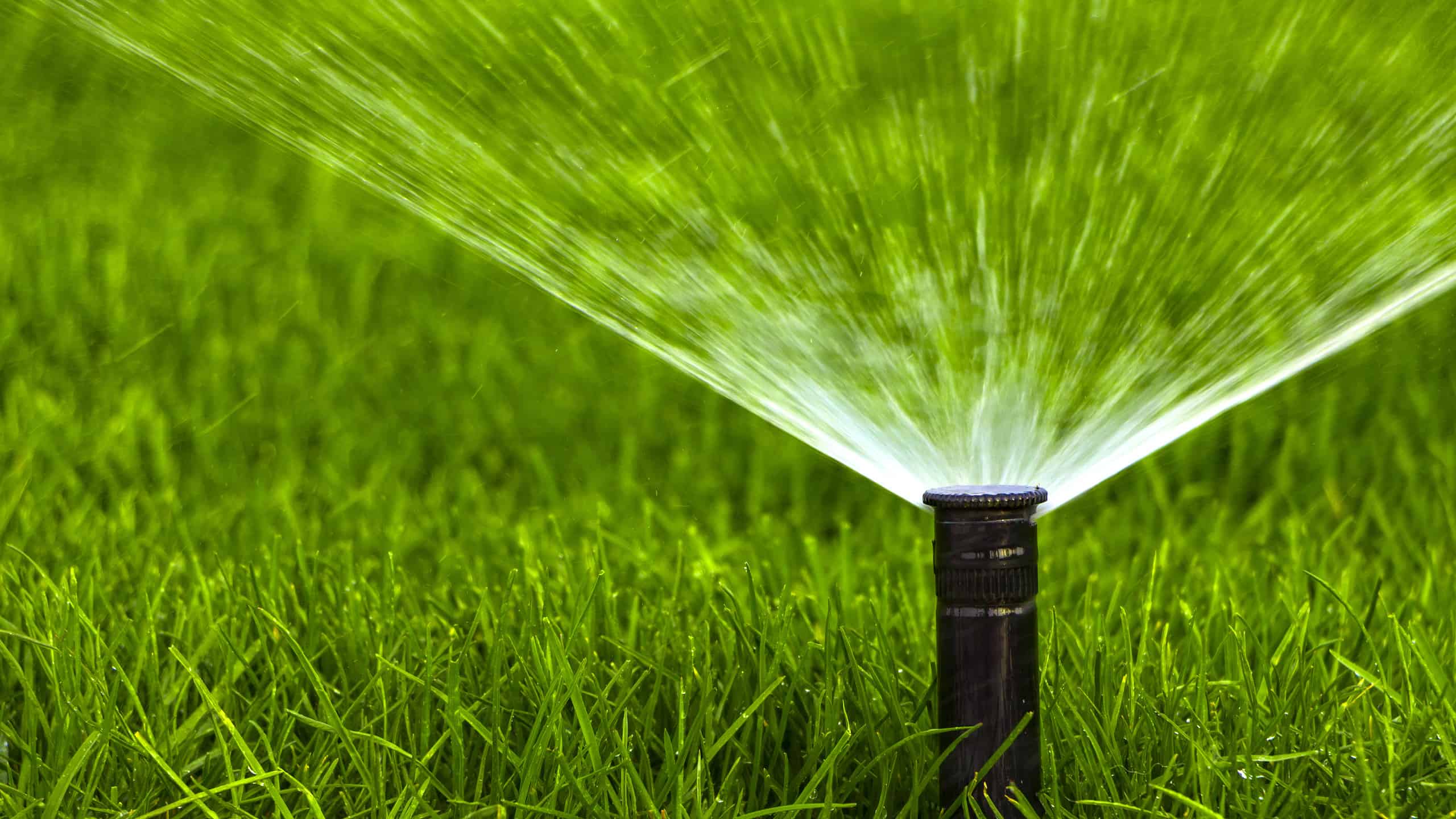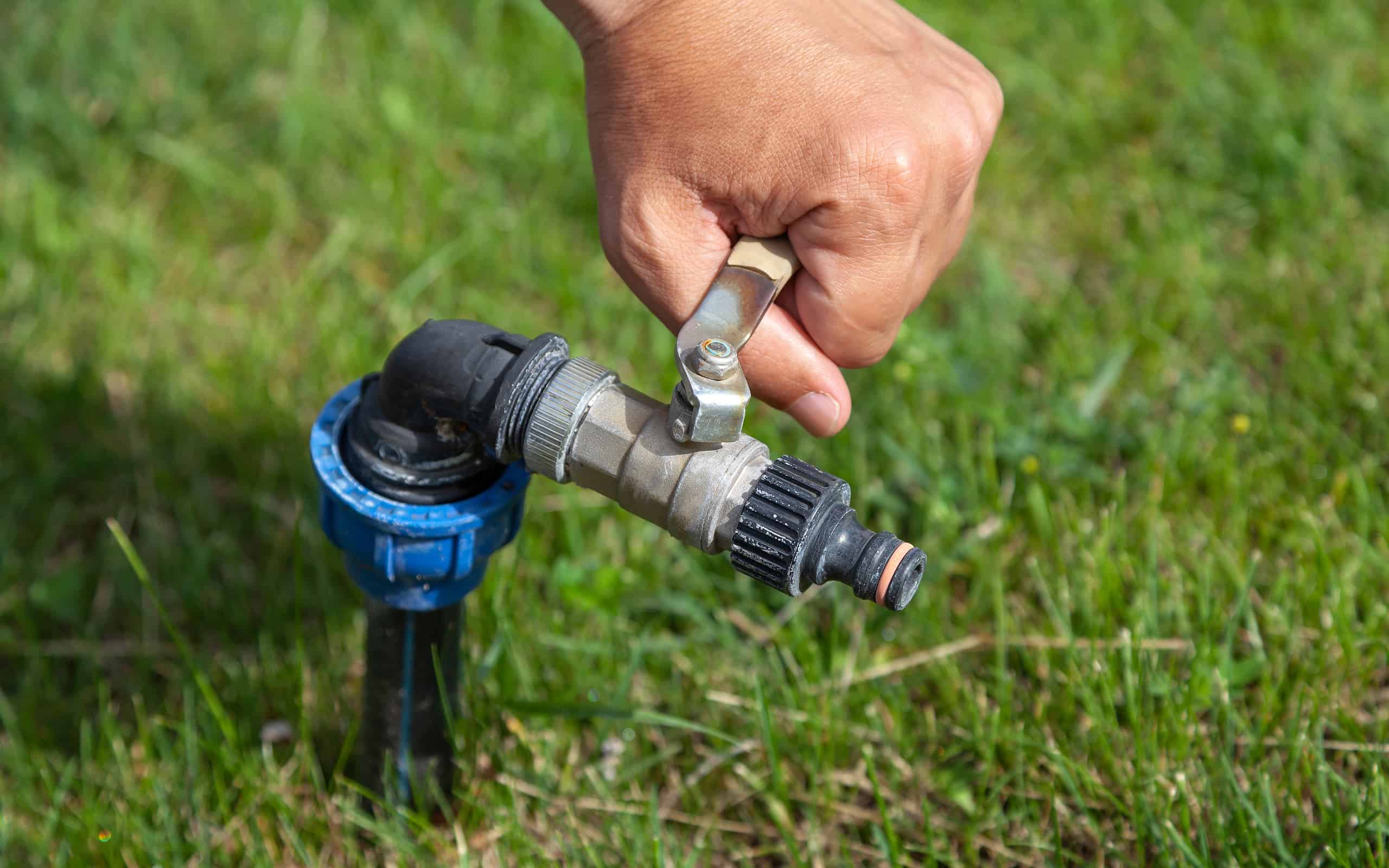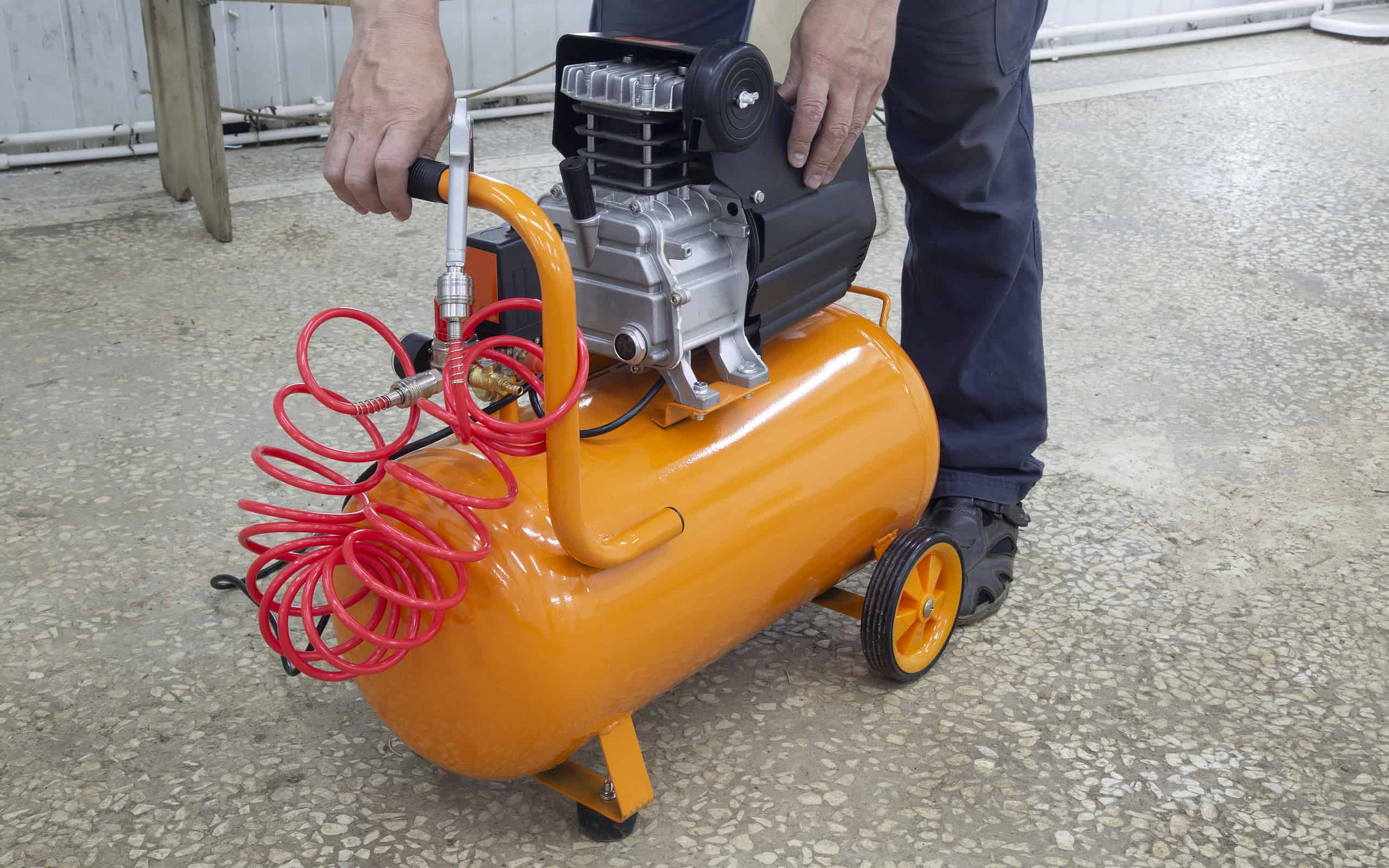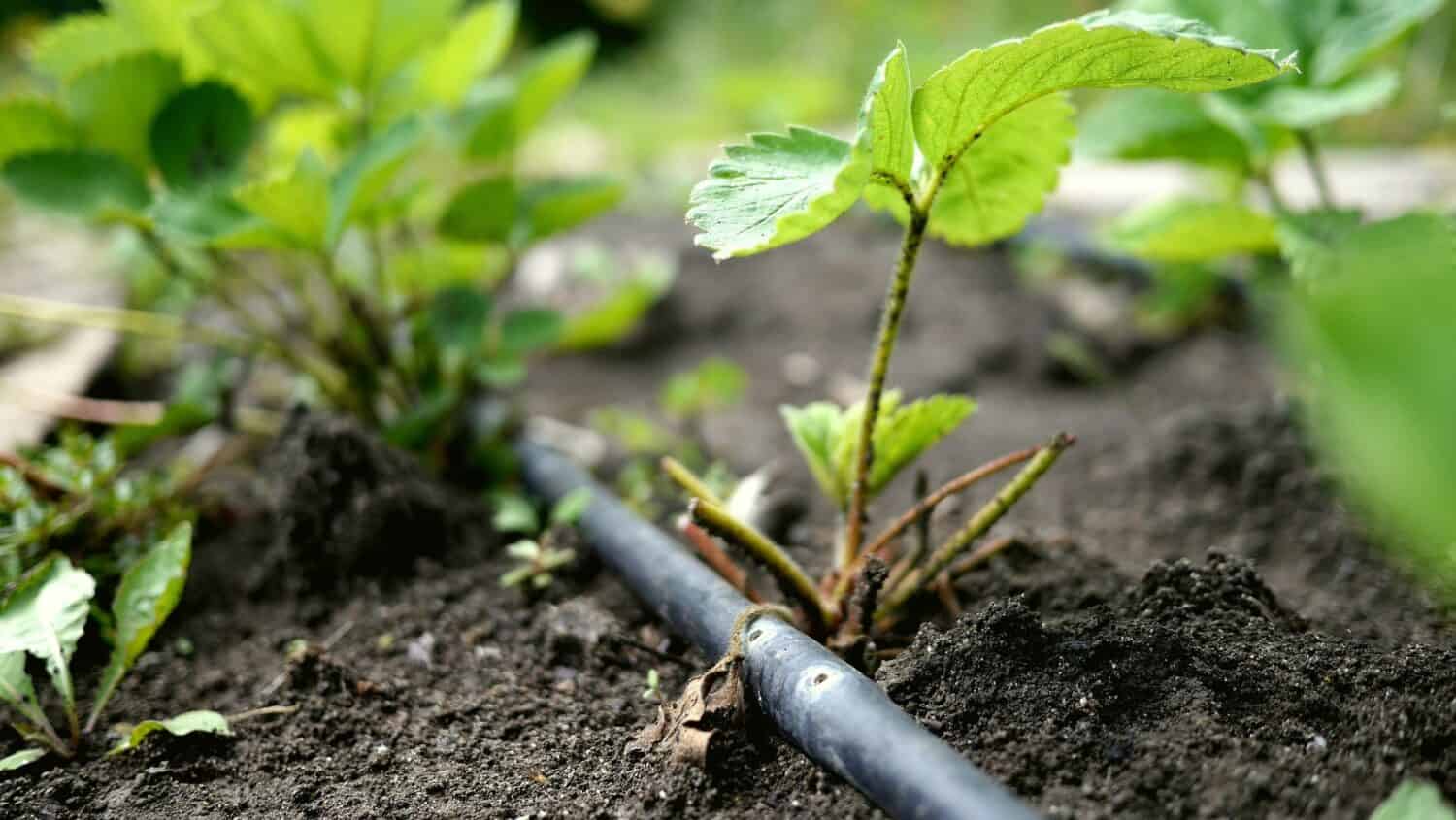Winterizing your yard can be a considerable task, even if you live in a warmer climate. You’ll need to prepare the lawn, get your snow removal gear ready, and turn off your irrigation system for the winter. Unfortunately, turning off your irrigation system for the winter isn’t as easy as flicking a switch. In this article, we’ll talk about key steps and important considerations for winterizing your irrigation system, whether you live in a warm climate or a winter wonderland.
Let’s dig in!
Adjust Your System Settings

Grass requires less water during the winter, even in warmer climates. Adjust your settings accordingly.
©iStock.com/MaYcaL
If you live in a warmer climate, you won’t have the same extensive list of tasks as someone who needs to protect their irrigation system from subzero temperatures. However, you should adjust your system settings to reduce the watering frequency.
Plants go through a dormancy period in the winter, even when it’s warm. As such, they require less moisture to survive. Additionally, as temperatures drop, so does the amount of evaporation impacting your lawn, so you can turn down your system.
Turn Off the Water

Turn off the water shut-off valve on your irrigation system
©glebchik/iStock via Getty Images
If you live in a cold area with subzero temperatures during the winter, the first step will be to shut down the water flow to your irrigation system. This step is essential to prevent water from flowing through the pipes and freezing in the winter — not using the system isn’t enough to protect the pipes from bursting.
Turn Off Automations

Automatic watering systems are a lifesaver — until you forget to turn them off!
©iStock.com/
Disabling automation and timers is one of the most overlooked steps in turning off your irrigation system for winter. If your sprinklers are timed to turn on every morning, the system will still try to do this even when it has no access to water. This can put additional wear and tear on your system.
Shut down your automations for the winter, and remember to turn them back on in the spring.
Flush and Drain the System

Drain any remaining water from your pipes to prevent freezing.
©SafakOguz/iStock via Getty Images
Next, drain the rest of the water from your irrigation system to avoid costly burst pipes during the winter. You can do this manually by opening all the valves and letting the water flow out. Depending on your system, you may need to adjust the sprinkler settings or height to allow water to flow through. Check the specific guidelines for your system or talk to an irrigation specialist.
Some systems have an automatic drainage function for winterization. If your system has this function, you can turn on the sprinklers (while leaving the water turned off) to start draining. When in doubt, consult an expert.
Blow Out the Lines

Consider hiring a specialist to blow out your irrigation system.
©Aleksandr Potashev/iStock via Getty Images
Warning: This step is for experienced system owners only!
The best way to ensure your irrigation system is free of water and debris is to blow out the lines. This step is best left to the experts. However, if you’re knowledgeable about your system and have an air compressor, it’s possible to DIY this step.
You’ll need a compressor, coupler, and safety gear (gloves and goggles) to complete this task. Be sure to close the valves on the backflow preventer or remove the backflow preventer (depending on your system) to avoid expensive damage.
If your system has a blowout port, you can connect your compressor to it. Slowly and gradually increase pressure to blow out the lines, stopping immediately when signs of water are no longer apparent. After you disconnect, open the valves to release any remaining pressure.
Insulate the Backflow Preventer

Backflow preventers ensure water runs in one direction.
©Artsiom Malashenko/iStock via Getty Images
If your irrigation has an above-ground backflow preventer valve, wrap it in insulation and tape for the winter to help prevent freezing.
Insulate Exposed Pipes and Sprinklers

Insulating all exposed pipes, faucets, and sprinklers will extend their lifespan.
©CRobertson/iStock via Getty Images
Add an extra layer of protection to your plumbing and irrigation system by insulating all exposed pipes, faucets, and sprinkler heads. This practice will extend their lifespan and keep them working properly.
Remove and Store Hoses

Draining and storing hoses for the winter will keep them functional for spring.
©Nadeene/Shutterstock.com
Drain and store your hoses and detachable components in a dry shed or basement for the winter. This habit will extend their lifespan and keep them ready for the spring.
Plan Your Last Mow

Keep your grass longer for the winter for an extra layer of insulation.
©encierro/Shutterstock.com
What does the last time you mow your grass for winter have to do with the irrigation system? A lot, actually.
Consider leaving your grass a little longer than usual for the winter months to add an extra layer of insulation to protect your irrigation system from deep freezes. Try to time your last mow with the first frost.
Schedule a Service Check

Hiring a professional helps prevent costly mistakes while keeping your system running smoothly.
©welcomia/iStock via Getty Images
Consider hiring a professional to help with turning your irrigation system off for the winter. The technician will blow out the lines and check for signs of leaks so it’s ready for spring. They can also help educate you on proper maintenance so you can become a confident DIYer in the future.
Summary Table of Steps for Things You Should Do Before Turning Off Your Irrigation System for the Winter
| Preparation Steps | Things You Should Do Before Turning Off Your Irrigation System for the Winter |
|---|---|
| 1 | Adjust System Settings |
| 2 | Turn Off the Water |
| 3 | Turn Off Automations |
| 4 | Flush and Drain the System |
| 5 | Blow Out the Lines |
| 6 | Insulate the Backflow Preventer |
| 7 | Insulate Exposed Pipes and Sprinklers |
| 8 | Remove and Store Hoses |
| 9 | Plan Your Last Mow |
| 10 | Schedule a Service Check |
Thank you for reading! Have some feedback for us? Contact the AZ Animals editorial team.








